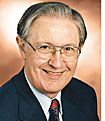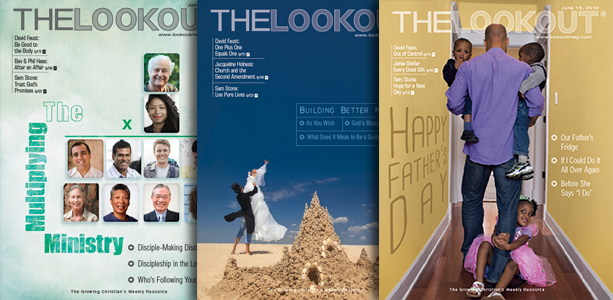By Sam E. Stone
 This is the concluding lesson in our studies about rebuilding the temple in the post-exilic period of Old Testament history. Haggai and Zechariah were contemporaries. Together they challenged God’s people to complete the rebuilding of the temple in Jerusalem. One final verse from Haggai begins today’s study. Zechariah was evidently a young man at this time (Zechariah 2:3, 4). This book that bears his name contains a number of important predictions of the coming Messiah (see 11:12, 13; 14:4, and so on).
This is the concluding lesson in our studies about rebuilding the temple in the post-exilic period of Old Testament history. Haggai and Zechariah were contemporaries. Together they challenged God’s people to complete the rebuilding of the temple in Jerusalem. One final verse from Haggai begins today’s study. Zechariah was evidently a young man at this time (Zechariah 2:3, 4). This book that bears his name contains a number of important predictions of the coming Messiah (see 11:12, 13; 14:4, and so on).
Special Man
Haggai 2:23
Zerubbabel has been prominent throughout Haggai’s messages from God. This final revelation promises the preservation and care of the Davidic monarchy, represented by Zerubbabel. “I will make you like my signet ring,” the Lord declared.
C. F. Keil pointed out that “the meaning of the figurative expression . . . is evident from the importance of the signet-ring in the eyes of an oriental, who is accustomed to carry his signet-ring constantly about with him, and to take care of it as a very valuable possession.” When God overthrows the kingdoms of the nations, he will give Zerubbabel a position in which he will be inseparably united with Jehovah.
Special Message
Zechariah 4:1-3, 6-14
The fifth of the eight “night visions” begins here. When Scripture speaks of Zechariah as being wakened from sleep, it may not mean a literal awakening, but rather being roused to “a higher state of prophetic receptivity.” At times the recipients were psychologically and physically exhausted.
When the angel asked Zechariah what he saw, he replied, “A solid gold lampstand with . . . seven lamps on it, with seven channels to the lamps.” Some suggest that what is pictured is a modern menorah, but this lampstand seems different from it and from what is described in Exodus 25:31-40. The seven channels apparently carry oil from the bowl to the lamps. The two olive trees nearby suggest an unlimited supply of oil for them.
Mark Hahlen noted, “The angel does not appear to answer Zechariah’s question, but instead delivers a message encouraging Zerubbabel to complete the rebuilding of the temple.” Might denotes power such as would be demonstrated in physical wealth or by an army. Power conveys a similar idea meaning human strength. The same two words were used by Moses when he warned the Israelites not to depend on their abilities, but rather on God’s provision (Deuteronomy 8:17, 18). The psalmist had a similar message (Psalm 33:16).
The prophet combines all of the opposition to God’s plan as he pictures a mighty mountain. It should not produce doubt or fear (compare Mark 11:23). All of the difficulties faced in rebuilding the temple are lumped together and figuratively called a great mountain. These difficulties would include both lack of resources and lack of manpower. Before Zerubbabel, however, even such a mountain is reduced to a level plain.
What is translated the chosen capstone pictures the final stone, carefully placed at the top of a structure. The people’s response will then be, “God bless it! God bless it!” Some would say, “Grace! Grace,” or even, “Beautiful! Beautiful!” God’s favor is seen in the completion of his temple by his people. Zerubbabel helped lay the foundation some 16 years before and is now able to finish the job he began.
One of the great principles of Scripture is expressed in verse 10—“Who dares despise the day of small things?” God will determine the final measurements (see also Matthew 13:31-33). Henry Halley wrote, “It is an exhortation to take courage, in the day of small beginnings, by keeping our eyes on the grandeur of the end . . . . The imagery here is carried over into the vision of the Two Witnesses in Revelation 11.”
Most Bible scholars understand that the two who are anointed to serve the Lord are Zerubbabel and Joshua, the primary leaders of God’s people at this time. Keil observed, “The two sons of oil can only be . . . the existing representatives of the priesthood and regal government, who were at that time Joshua the high priest and the prince Zerubbabel.”
James E. Smith concluded, “If the olive boughs represent Joshua and Zerubbabel in particular, the trees must represent the royal and priestly offices. These offices empowered the people of God to give forth their light of witness in the world. In Christ the priestly and royal offices were combined. Christians are said to be both kings and priests because of their relationship with Christ. Through the witness of the church the oil of the Holy Spirit is conveyed to mankind.”
Sam E. Stone is the former editor of Christian Standard. He continues his writing and speaking ministry from his home in Cincinnati, Ohio.



Comments: no replies